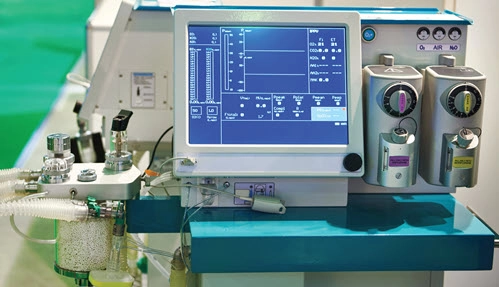Low blood pressure doesn’t automatically mean you report this code.
Because no two anesthesia cases are alike, a group of add-on codes known as “qualifying circumstances” (or QC) codes describe situations that could impact the nature of anesthesia services provided.
Let’s dig into one of those codes, +99135 (Anesthesia complicated by utilization of controlled hypotension (List separately in addition to code for primary anesthesia procedure)), which has several considerations to take into account.
Follow these three tips to increase your chances of successful claims with +99135.
Remember: Last month we looked at code +99140 (Anesthesia complicated by emergency conditions (specify) (List separately in addition to code for primary anesthesia procedure)) and what might constitute an emergency from an anesthesia coding standpoint.

Tip 1: Verify That Thorough Documentation Is in Place
When deciding whether reporting +99135 is appropriate, remember that the circumstances qualifying for this code are unique to anesthesia coding and identify certain patient conditions, operative conditions, or other special risk factors that lead the surgeon to believe the patient needs to be in a hypotensive state (reduced blood pressure) during surgery.
The following phrases should be present in the record to support the use of +99135:
and fast rule to what the blood pressure is reduced to for it to be considered induced hypotension,” says Kelly D. Dennis, MBA, ACS-AN, CANPC, CHCA, CPC, CPC-I, owner of Perfect Office Solutions in Leesburg, Florida. “It can be 20 to 30 percent lower than the normal blood pressure, but also can depend on what the patient’s blood pressure normally is.”
Caution: Do not rely on the patient’s charted blood pressure alone when assigning +99135. Code +99135 is intended to be used only when hypotension is induced deliberately, not when it occurs as an incidental condition.
“Many coders and auditors do not have a clinical background and look to the anesthesia record for clear indications of induced hypotension, usually in the remarks or comment section of the EAR or paper record. As coders, we should not be looking at medications used to induce hypotension or the patient’s blood pressure and make assumptions,” Dennis adds.
Tip 2: Check for the Surgeon’s Request
Intentionally lowered blood pressure allows the surgeon to work in a virtually bloodless field. Anesthesiologists often administer controlled hypotension during certain procedures (such as shoulder or hip surgery) at the surgeon’s request. During controlled hypotension, the anesthesiologist closely monitors the patient’s blood pressure while it drops drastically and then levels off.
If that’s the situation for the claim you’re filing, the anesthesiologist should document in the anesthesia record that the hypotension was due to the surgeon’s request.

Tip 3: Remember the QC Coding Rules
Because +99135 is an add-on code, you can report it only in conjunction with a primary procedure code. Acceptable primary codes that can be billed with +99135 (or any other add-on code) are at the payer’s discretion.
Remember: The Medicare Physician Fee Schedule assigns a status indicator of “B” (bundled code) to qualifying circumstances codes +99100-+99140, which means they are not eligible for separate reimbursement under traditional Medicare guidelines. Other insurers, however, sometimes allow additional payment for qualifying circumstances if the services are deemed reasonable and necessary. The value of the additional codes is significant (up to five base units for +99116, Anesthesia complicated by utilization of total body hypothermia …, and +99135), which can mean higher payment for the anesthesiologist or CRNA.
Even if the payer you’re filing the claim to doesn’t reimburse for the additional units of qualifying circumstances codes, reporting them helps paint a complete picture of the case and your anesthesia provider’s work.
Pay attention: Make sure you don’t report +99135 separately when the anesthesia code you’re reporting already includes the service of +99135. Codes 00566 (Anesthesia for direct coronary artery bypass grafting; without pump oxygenator) and 00567 (… with pump oxygenator) include the total body hypothermia and controlled hypotension services represented by +99116 and +99135. Although CPT® doesn’t include this information, the ASA Relative Value Guide® includes parenthetical comments that the descriptors take hypotension and hypothermia into consideration.
